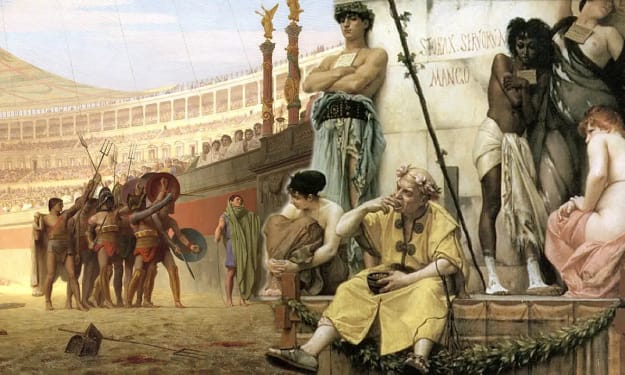Why America's police looks like soldiers?
From Beat Cops to Battle Gear: The Transformation of American Police into Resembling Soldiers

On a balmy June 1st, a protest surged near the iconic White House, brimming with voices raised in peaceful unity. Yet, the scene shifted swiftly as a formidable contingent, adorned in helmets, riot shields, rifles, and even tear gas canisters, moved to confront the demonstrators. The figures in this mix of authoritative presence included a fusion of police and military personnel - Secret Service agents, vigilant Park Police, the steadfast National Guard, the specialized forces of the Prison system, and the vigilant local law enforcement from a neighboring county. The intriguing aspect here is discerning who among these figures represents the police force. This task, however, is made perplexing due to an evolving and unsettling resemblance between America's police officers and its armed forces.
Taking a stroll back to the 1980s, the appearance of American police officers was notably distinct. The United States' crime rate danced through fluctuations, with President Reagan's call to arms against drug-related issues. An initiative was launched to bridge the military and police forces, particularly in the context of the War on Drugs. The sentiment was echoed through Congress, paving the way for a series of legislative acts. These acts aimed at granting police access to military installations and equipment, National Guard support in drug-related operations, joint training of military and police personnel, and ultimately, the provision of surplus military equipment to police departments, free of charge - an initiative soon christened as the 1033 program. Through this program, police departments acquired an array of resources - from assault rifles resembling M16s to imposing armored trucks, even venturing into grenade launchers.
These changes, however, did not merely affect the inventory of police arsenals; they catalyzed a transformation in the very essence of how police operated. A striking shift was observable in the frequency of SWAT team deployments. In a telling contrast, departments that called upon these specialized units around once a month during the 1980s found themselves engaging them more than 80 times annually by 1995. The majority of these deployments centered on drug-related search warrants, often employing forceful entry strategies commonly referred to as "no knock warrants." As a consequence, the image of the police force began to morph into that of an occupying military presence - a shift highlighted in a 1997 article likening the police to an "occupying army."
A pivotal moment unfolded in 1997 when a bank robbery in North Hollywood thrust the limitations of the police's armament into stark relief. Two armed robbers had automatic rifles and protective body armor, whereas the police officers responding did not. The outcome was a harrowing confrontation that left a dozen officers injured. The aftermath of this incident sparked a fervent demand for improved weaponry, most notably the inclusion of assault rifles like the AR-15. This plea resonated not only in California but reverberated across the nation from Florida to Connecticut. Simultaneously, the 1033 program was broadened, eliminating the prerequisite for equipment to be used solely in drug enforcement operations. Consequently, even university police departments gained access to surplus military armament, for any purpose they deemed necessary. A former Connecticut police chief recollected being offered an astonishing array of equipment, including tanks and bazookas.
Regrettably, the precise extent of these equipment loans remains elusive due to inadequate record-keeping until 2015. However, data regarding the equipment retained by police departments each year it was provided reveals a steady expansion throughout the 1990s and 2000s. A notable inflection point coincided with the winding down of the Iraq War in 2011. With the military's vast inventory of equipment suddenly available, police departments had access to a surplus of armament, even acquiring Mine Resistant Ambush Protected Vehicles (MRAPs) - equipment that would soon attract substantial scrutiny.
In the summer of 2014, the 1033 Program burst into the national spotlight following the tragic shooting of Michael Brown, an unarmed black teenager, by a police officer in Ferguson, Missouri. The ensuing protests were met with a heavily militarized response, triggering widespread concern. Amidst this turmoil, then-President Obama issued an executive order aimed at curbing the 1033 Program. However, this attempt at reform was short-lived, as the subsequent administration under President Trump rolled back these changes, albeit at a time when the program's significance had already begun to wane.
A closer examination reveals that by 2016, the program's focus had shifted. Smaller police departments emerged as the primary beneficiaries of MRAPs, indicating a trend toward independent procurement. Today, the adoption of military gear by police is no longer tethered to a single government program; it has become a fundamental aspect of their self-identity. Arthur Rizer, a former military and civilian police officer turned researcher, delves into the psychological impact of such a transition. A poll he conducted among police officers unveiled that while the majority had no qualms about using military-grade equipment, they did acknowledge that it altered their mindset and behavior, often resulting in heightened aggression and assertiveness.
While there have been instances where the deployment of such equipment proved advantageous, such as the Orlando police's use of an armored vehicle during the Pulse Nightclub shooting in 2016, these instances are the exception rather than the norm. Today, a substantial portion of this military equipment is relegated to the domain of SWAT teams executing drug-related search warrants. Notably, many of these operations employ no-knock warrants - the same approach that led to the tragic death of Breonna Taylor in Louisville.
In contemplating this issue, the confluence of military and police roles raises disconcerting questions. A military force is tasked with safeguarding the collective "us" from perceived external threats, while a police officer should ideally represent a reassuring presence within the "us." Yet, as law enforcement officers increasingly embrace the mantle of soldiers, this distinction blurs. In this context, a poignant question emerges: what purpose does an assault rifle serve in the face of a protest? The analogy of providing a hammer to someone and then expecting them not to view everything as a nail becomes eerily relevant.
In essence, the transformation of America's police officers into a militarized force is a multifaceted narrative that intertwines political initiatives, shifting ideologies, and societal perceptions. It underscores the intricate dance between maintaining public safety and preserving the essential fabric of a community. As the nation grapples with this evolving paradigm, the need for a delicate equilibrium becomes ever more pronounced.
Like what you read? Consider liking and subscribing for more! :)






Comments
There are no comments for this story
Be the first to respond and start the conversation.